Base'N Bench RT3048L-TBN-RB30KIT Installation guide
- Type
- Installation guide

Copyright © 2020. Tile Redi Sales, LLC. All Rights Reserved 1 Rev. 20201204
BASE’N BENCH® INSTALLATION GUIDE
Tile Redi® Shower Pan and Bench Kit
To help guide you through the Base’N Bench® installation process, we have provided the following REDI BENCH®
Installation Guide which is intended to provide an easy-to-follow step-by-step process for the installation of your Tile
Redi® REDI BENCH as well as your Tile Redi Shower pan. In connection with your REDI BENCH and shower project, please
comply with the recommendations and standards established for such projects from time to time by the Tile Council of
North America, Inc., for the installation of a tiled shower.
INSTALLATION INSTRUCTIONS FOR REDI BENCH
1. The REDI BENCH® is designed to be installed exclusively with Tile Redi® shower pans (known as Redi Base®, Redi
Trench®, WonderFall Trench®, Wonder Drain®, Bathtub Replacement™, Redi Free™, and Redi Your Way®) using the
REDI FLASH® flashing system.
2. The shower stall will need to be framed out as an assembly of the REDI BENCH and the Tile Redi shower base, with
the framed out opening equal to the outside dimensions of the shower base plus an additional 12 inches on the side
of the shower base where the REDI BENCH is to be installed to accommodate the depth of the REDI BENCH. Please
see the REDI BENCH spec sheet.
3. Install the REDI BENCH frame between the shower base footprint and the shower wall framing. Either wood or metal
framing may be used as required by local building codes. The REDI BENCH framing (the framing height is based on
personal preference, but it is usually a height of 18”) should be installed along the appropriate side of the shower
base so that it will be butted up against the splash wall of the shower base. The bench framing will then need to be
securely attached to the shower floor substrate, and the shower framing on the three sides of the REDI BENCH. The
REDI BENCH framing will need to be level because the REDI BENCH is already designed with a slope so the seat of the
bench will drain into the shower.
INSTALLATION INSTRUCTION FOR SHOWER PAN WITH PVC DRAIN
4. Frame out shower stall area to shower pan dimensions.
5. Sweep out any debris from sub floor.
6. Test fit shower pan drain housing into subfloor bore hole. DO NOT NAIL OR SCREW ANYTHING INTO THE PAN. DO
NOT SAND, CUT, OR MAKE ANY CHANGES/MODIFICATIONS TO THE SURFACE OF THE SHOWER PAN WHATSOEVER.
7. Make sure the shower pan is aligned properly and fits snuggly against the shower frame studs on all sides.
8. This step depends on whether there is access to the drain connection from below the subfloor:
a. If there is access from the subfloor below, then cut a section of drain pipe (PVC, as applicable to the type of drain)
which is long enough to extend below the subfloor and easily make a connection to the waste water pipe.
b. If there is no access from the subfloor below, then make sure the drainpipe stubbed up from the subfloor is
adjusted to a height sufficient to fit properly into the shower pan drain connection.
9. Turn the shower pan over and note that there are ribs under the shower pan floor. Calculate the amount of mortar
needed by measuring the height from the rib bottoms that rest on the substrate to the underside of the pan floor at
the deepest point in between the ribs. Once you have that value, calculate the thickness (depth) of your mortar
base (Type N or S Mortar) using the formulas listed below based on the type of shower pan you purchased:
a. Redi Trench® / WonderFall Trench® / Redi Free® Trench Pans:
b. Subtract 1/2” from deepest rib measured in Step 6.
c. Redi Base® & Redi Free® (Non-Trench) / Wonder Drain® Pans: (Left or Right Drain ONLY) Subtract 1/4” from
deepest rib measured in Step 6
d. Redi Base® & Redi Free® (Non-Trench) / Wonder Drain® Pans: (Center Drain ONLY)
10. Subtract 1/8” from deepest rib measured in step 6, PROVIDED the mortar base should always be at least 1/2”.
Please note, do not place the mortar directly on a wood or Gyp-crete substrate. First, waterproof the wood substrate
with a fluid applied waterproofing membrane or NO. 15 or No. 30 roofing paper so the wood does not absorb the
water from the mortar.

Copyright © 2020. Tile Redi Sales, LLC. All Rights Reserved 2 Rev. 20201204
11. Spread your mortar base (should be a milk shake consistency), EVENLY ACROSS THE SUBFLOOR AT THE THICKNESS
CALCULATED FROM STEP 6a, 6b, or 6c, and offset 1“ from each outside edge of the pan with exception of the curb
side. Mortar will protrude out from under the curb, run the finished side of trowel along curb face to backfill any
excess mortar.
a. If there is access from the subfloor below and you followed step 5.a. above, then brush PVC adhesive on the
outside of the cut drain pipe and quickly insert into drain connection, and then be sure the drain pipe extends far
enough below the subfloor so it can be conveniently connected to the waste water pipe following the
installation.
b. If there is no access from the subfloor below and you followed step 5.b. above then brush PVC adhesive on the
drain pipe stubbed up from the subfloor, then quickly insert the stubbed-up drain pipe properly into the shower
pan drain.
12. Place the pan in the mud base and firmly but gently shimmy the pan (applying pressure in drain location first) into
the mud so that (i) the drain is fully supported by mud at the bore hole in the substrate, and (ii) the ribs are
completely filled with the mud alternately applying hand pressure to the right and left sides of the pan floor until the
pan ribs come within 1/8” clearance of the subfloor. Level all pan sides and the let the mortar dry overnight.
Important: DO NOT STEP INTO THE SHOWER PAN ONCE THE SHOWER PAN HAS BEEN SET AND LEVELED UNTIL THE
MORTAR HAS CURED COMPLETELY
13. Install the shower backer board and water proofing in accordance with the standards established by the Tile Council
of North America, Inc.
14. Adjust the height of the drain as necessary to accommodate the flooring covering.
15. Seal and waterproof joint between backer board and the shower pan splash walls using Redi Flash® or 100% silicone,
and then cover the joint with a fluid applied waterproofing membrane on the shower walls over the joint. Allow the
mortar bed to dry in accordance with the instructions of the mortar bed manufacturer.
16. Install the backer board on the face of the bench framing resting on the splash wall flashing (per manufacturer
instructions) leaving 1 ½” of space between the top of the backer board and the top of the framing, ensure to fasten
the backer board to the wood or metal framing. After installing the backer board to the framing wipe off excess
silicone. Apply the REDI FLASH to the top of the backerboard with the long side of the flashing pointing down
toward the shower pan and fasten to the framing. Apply a bead of 100% silicone to the top of the flashing.
17. Apply Loctite PL Premium construction adhesive to all surfaces of the bench frame which are in contact with the
REDI BENCH when it is placed in the frame (i.e., the top of the frame and the vertical frame studs above the splash
wall.) Then, install the REDI BENCH by securely placing the REDI BENCH on the framing so it is in contact with all the
seat and leg support areas containing Loctite PL Premium construction adhesive. Press the REDI BENCH firmly onto
the Loctite PL Premium construction adhesive on the bench frame and hold it securely in place for approximately 30
minutes. After placing the bench frame wipe clean any excess silicone.
18. Install the REDI FLASH on the top of the 3 splash walls of the REDI BENCH in the same fashion that the REDI FLASH
was installed above the shower base splash wall.
19. Now you are ready to install the ½” backer board above the REDI BENCH splash walls and the splash walls of the
shower base.
Ensure that you waterproof the backer board per manufacturer’s instructions. Now that the REDI BENCH and the
shower base are secured and sealed in all areas you are ready to tile the shower base using Tile Redi approved modified
thin-sets shown below (Appendix A).
APPENDIX A
Tile Redi approved modified thin-sets
MAPEI Ultraflex LHT White
MAPEI Large Format Floor and Wall White
CBP Prolite White
MAPEI Ultraflex 1 White
MAPEI Porcelain Tile White
CBP Flexbond White
MAPEI Large Tile and Stone White
MAPEI Ultraflex LFT White
-
 1
1
-
 2
2
Base'N Bench RT3048L-TBN-RB30KIT Installation guide
- Type
- Installation guide
Ask a question and I''ll find the answer in the document
Finding information in a document is now easier with AI
Related papers
-
Redi Bench RT3448L-SQPC-RB34-KIT Installation guide
-
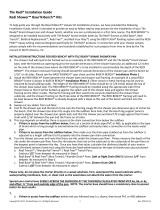 Base'N Bench RT3448L-SQBN-RB34-KIT Installation guide
Base'N Bench RT3448L-SQBN-RB34-KIT Installation guide
-
Tile Redi WF4860R-RB48-KIT User manual
-
Base'N Bench RT4872B-PVC-PC User manual
-
Base'N Bench RT4260RDL-PVC-BN3 User manual
-
Base'N Bench RT4260CTC-PVC-BN User manual
-
Tile Redi WD3060C-RB30-KIT-2.5 User manual
Other documents
-
Zurn FD2260-PV2 Installation guide
-
Tile Redi USA P3666CDR-PVC Installation guide
-
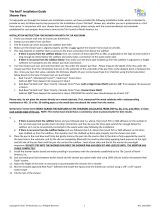 Tile Redi RT3060L-PVC-BN3 Installation guide
Tile Redi RT3060L-PVC-BN3 Installation guide
-
Tile Redi 3060C-PVC Installation guide
-
Redi Base 4238CBF-PVC Installation guide
-
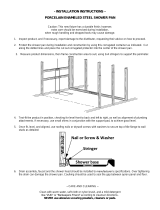 Bootz Industries 010-1103-00CH Installation guide
Bootz Industries 010-1103-00CH Installation guide
-
Redi Shade 2606571 User manual
-
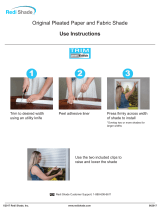 Redi Shade 3152699 Installation guide
Redi Shade 3152699 Installation guide
-
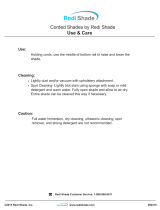 Redi Shade 2992306 User manual
Redi Shade 2992306 User manual
-
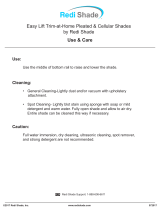 Redi Shade 3511151 User manual
Redi Shade 3511151 User manual







